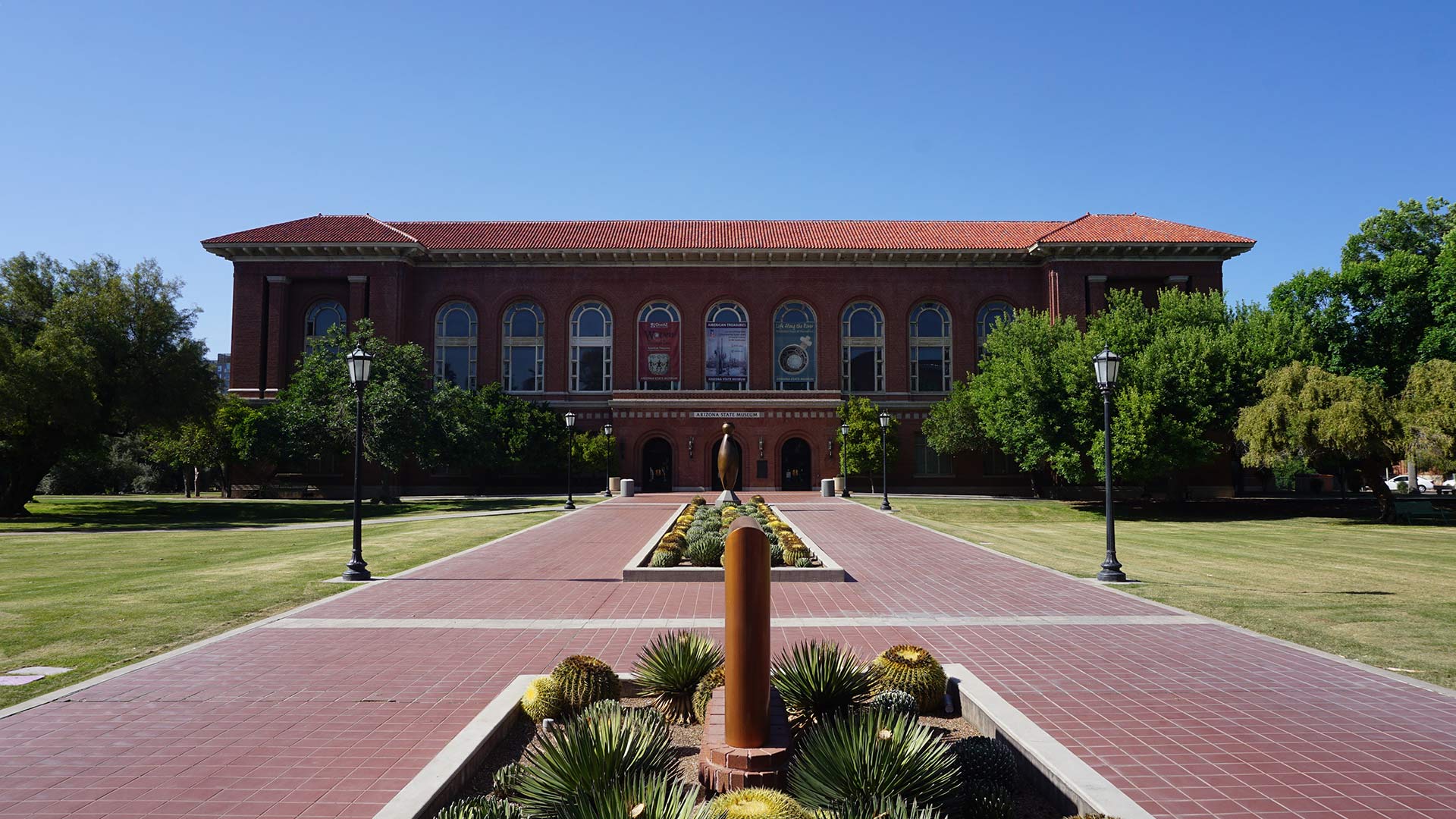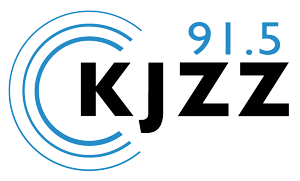 The Arizona State Museum on the western mall of the University of Arizona campus.
The Arizona State Museum on the western mall of the University of Arizona campus.
The Arizona State Museum is a sweeping tribute to Arizona history going back 13,000 years. Its vast archives grow exponentially every year and it houses one of the most important collections of anthropology in the Southwest.
But, since last year, it’s been closed. Its operators say the building is in need of such repairs that it’s unsafe for people to go in it. But, the $50 million in repairs they say it needs to reopen was indefinitely tabled by the Arizona Board of Regents in September. It all has to do with the financial hole its host, the University of Arizona, is trying to dig itself out of.
Carolina Cuellar, a reporter at Arizona Luminaria in Tucson, joined The Show to talk about it.
Full conversation
CAROLINA CUELLAR: So, this building holds like 13,000 years of regional and historical artifacts. It's also the oldest and the largest anthropological museum in the Southwest, and it contains a lot of Native American materials and culturally significant artifacts that we hold dear and are necessary to, you know, keep the history of Arizona and make it accessible for the public.
Additionally, approximately two cargo vans of archaeological research material is added to the museum's archives annually. So, while they have like a series of materials that they're already preserving, the process is actually ongoing, and they need to have places to store these materials that are not only, like, big enough to hold, them but that also provides the proper care, and that's temperature, humidity control. It has to be a very specific environment.
LAUREN GILGER: Right, that's always true for archives, right? And this building, the museum itself, and the archives has been closed for a year or so. Tell us why.
CUELLAR: Yeah, of course. So the Arizona State Museum has not always been in this building, which is called the Raymond H. Thompson Building. But it did move into that building in the '70s. But, by that time the building was already old and so when the museum moved in pretty quickly, the director of the museum was like, “this building is in need of upgrades and maintenance,” and this was in the '80s.
So, since then, the building has continued to deteriorate without any of the necessary improvements. So they're sort of at a point where the building is, in a way, falling apart. It's not safe for people to even visit right now because of the asbestos, because of the conditions of the infrastructure, like the pipes and the HVAC.
GILGER: So some big problems that need to be fixed and that it sounds like haven't been fixed for quite some time. The museum requested funding for these fixes and got turned down, right? By who?
CUELLAR: By the Arizona Board of Regents. So, in September, late September during their general meeting, John Arnold, who is the chief financial officer for the University of Arizona, spoke to the board about needing funding for this project, which has already been underway, like they've been preparing for it for a year.
So the museum closed in August in preparation for these improvements. And just a month after when CFO Arnold presented the package before the Arizona Board of Regents, there was, I think, a lot of hesitancy. Because the original proposal was to fund this $50 million through system revenue bonds, which are actually sustained by student tuition. And as you, I think a lot of people know, the University of Arizona is sort of in a precarious financial position where they're working really hard to recover from that.
And so I sense a lot of pushback from the board of Regents, particularly due to that. And in addition, there's sort of a disagreement with who should be responsible for funding this, because it is a state museum, but it is on the property of the University of Arizona. So, while they tabled indefinitely the package for those improvements, they wanted to get legal advice or consult the state as to whether that should even be on them to begin with.
GILGER: So there's this battle over who is responsible to fix this place. They might turn to the state, it sounds like, what does the university have to say about this? As you said, this is all kind of tied to the fact that the university is in kind of a deep financial hole they're trying to get out of.
CUELLAR: Right, but, you know, within the university, you have the Arizona State Museum council, who is very adamant that these improvements need to be done. And again, this museum is very important, not just because of its artifacts, but because of its place in Arizona and letting Arizonans access, you know, these materials and all of this wonderful history. A lot of classes used to take field trips here. I've heard from multiple people that they remember going to the Arizona State Museum when they were younger.
So on one hand, you have the, the museum advocates who are saying this is something that needs to be invested in, and ABOR needs to figure it out. Because additionally, I think the argument is that state statute puts the onus of managing the museum on the board of Regents and I think that's the basis for a lot of the frustration from specifically the people who are on the museum council.
In terms of administrative level, higher level, I sense sort of a neutrality. There I think was an understanding that the funding was happening in a difficult situation like requesting this funding. So, John Arnold also offered that they are happy to wait until, you know, the state comes back with a response as to who the responsibility is.
So I wouldn't say there's a general consensus on what the perspective is on doing this, but there is definitely a very strong sentiment from the side of the museum advocates that this needs to be something that's funded, and the responsibility is on the Arizona Board of Regents, despite them saying that it's on the state.
GILGER: Right, and there were comments made by some of the people on, on the board of Regents, right, when this was tabled, saying, you know, “I'd rather see this money go elsewhere,” right?
CUELLAR: Yeah, so Regent Brewster said specifically that he'd rather see the money go towards “polishing the young people of Arizona” rather than having to have the UA “stand up and deliver because the state has ignored this project for years,” and that sentiment, I think was echoed by multiple regions during the meeting.
GILGER: So where does that leave these massive archives, the things that need to be temperature controlled in there, the things we don't want to lose to history, right? Are they in danger at this point?
CUELLAR: That is a great question, and I have not been able to get a straight answer. I know that in the year leading up to that closure, there was a movement of artifacts so that they would be safe while this maintenance is underway. So I think presumably they have moved some of the materials in a place where they can be contained. But I'm not sure how long they can keep it there, and I'm also not sure whether those conditions that they're in are good for the long term preservation of these artifacts.
GILGER: OK. The museum says at this point it expects to stay closed until at least the end of next year. Do we know if that is the end of the timeline or if it could be much longer?
CUELLAR: No, we don't know. And again, like if they don't have the funding, then it's hard to see how they could reopen, especially since all of the maintenance and the repairs were contingent on having that funding package.
KJZZ's The Show transcripts are created on deadline. This text is edited for length and clarity, and may not be in its final form. The authoritative record of KJZZ's programming is the audio record.


By submitting your comments, you hereby give AZPM the right to post your comments and potentially use them in any other form of media operated by this institution.